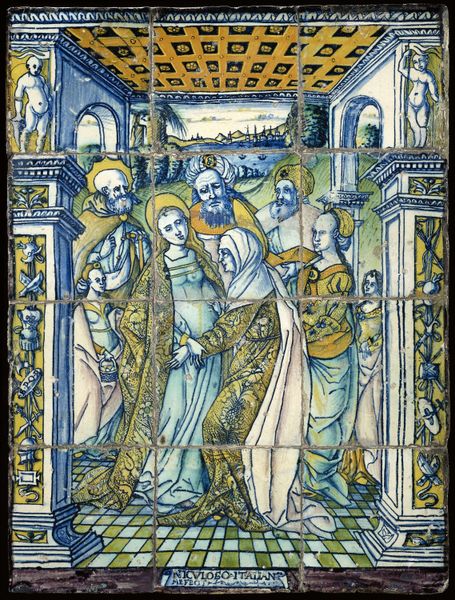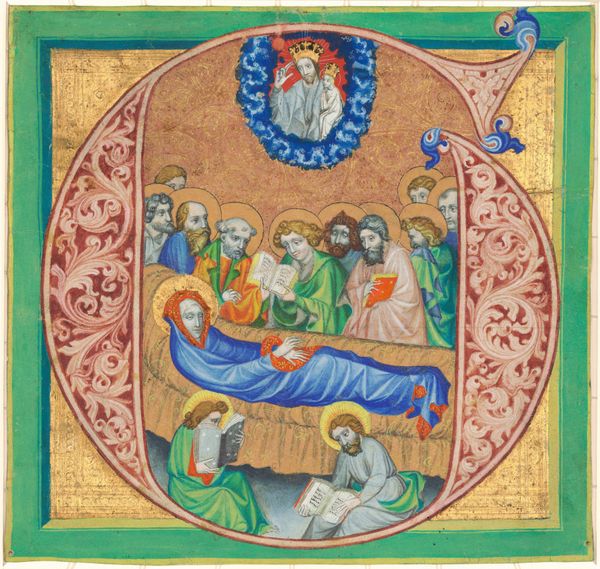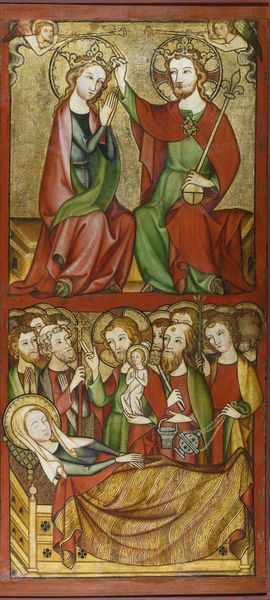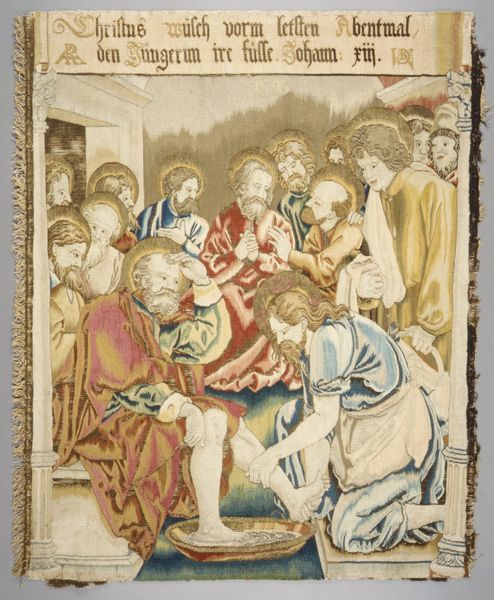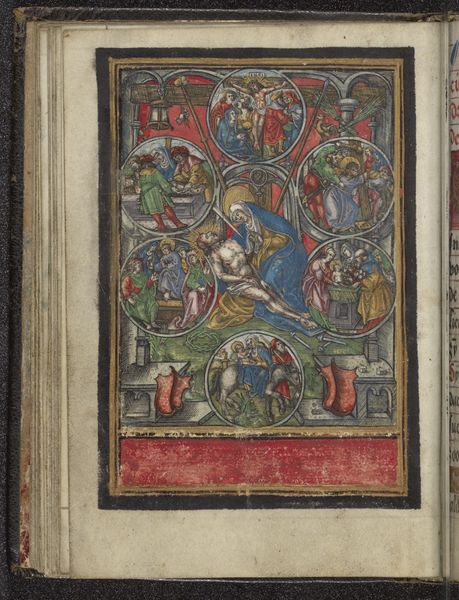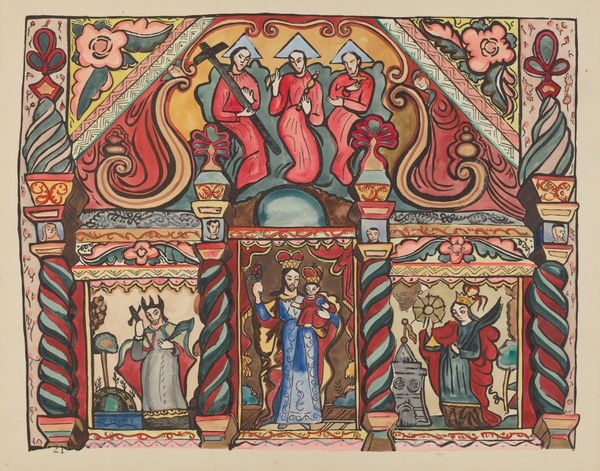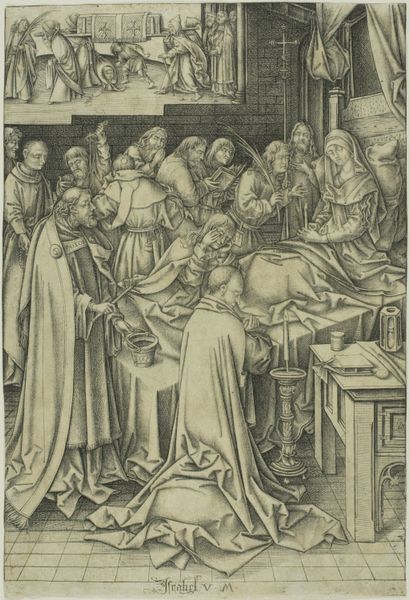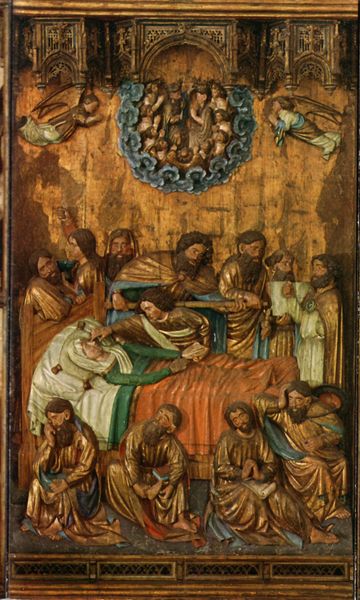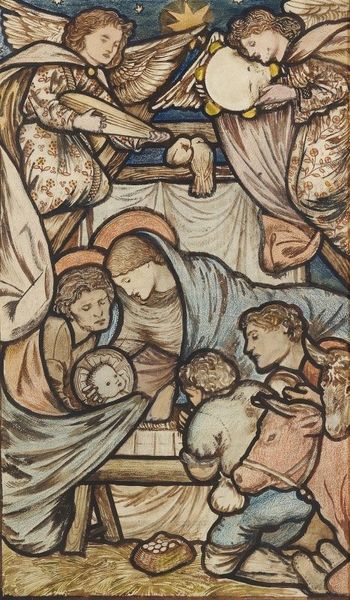
painting, enamel
#
medieval
#
narrative-art
#
painting
#
death
#
figuration
#
mural art
#
coloured pencil
#
enamel
#
naive art
#
france
#
medieval-art
#
miniature
Dimensions: Overall: 5 5/8 x 6 5/8 in. (14.3 x 16.8 cm)
Copyright: Public Domain
Curator: This enamel plaque, created between 1500 and 1525 by Jean Pénicaud I, depicts The Death of the Virgin. It’s currently held at the Metropolitan Museum of Art. Editor: It’s intense. The deep blues and the small scale—almost miniature—heighten the drama. Everyone seems overwhelmed with grief. Curator: Absolutely. Consider the production. Limoges enamel work of this period involved layering vitreous enamel on copper, firing it multiple times to build up colors and details. It's fascinating to consider how much labor went into crafting something so small yet so impactful. Editor: And labor not just of the hand, but the vision too, right? The subject, the Virgin Mary's death, resonates deeply with the precarity of female existence across centuries. There's an intimacy to the way these figures gather, their expressions of sorrow a kind of collective mourning that transcends religious doctrine. It feels incredibly…human. Curator: I agree. There's also something compelling about the constraints of enamel work – the artist working within the limitations of the material, but pushing the boundaries of what it could achieve. Pénicaud skillfully used the enamel to depict different textures, light and shadow, even capturing the subtle emotions on each person’s face. Editor: Those layers of material speak to layers of meaning as well. The figures arranged around the Virgin aren't just mourning her physical death, they're mourning an idea, a symbol. It speaks to the cultural role assigned to women. Consider, the artwork can almost be seen as an illustration about the death of an age of female prominence, which speaks of the anxiety of the age it was crafted in. Curator: It’s important to also acknowledge that while we can read individual expressions, there’s an element of standardization, which hints at workshop practices. Enamel work of this scale was often produced as part of a larger devotional set. What remains visible today in museum setting can be detached from its context within larger circuits of labour and production. Editor: It seems we’re back where we began—considering both the spiritual and material aspects here. I’m leaving this with the realization of the importance of collective, creative endeavor across gender lines, so to speak. Curator: And I’m fascinated, as ever, with the tension between skilled labor and devotional function. These historical object offers a wonderful insight into society values and labor practice of the time.
Comments
No comments
Be the first to comment and join the conversation on the ultimate creative platform.
